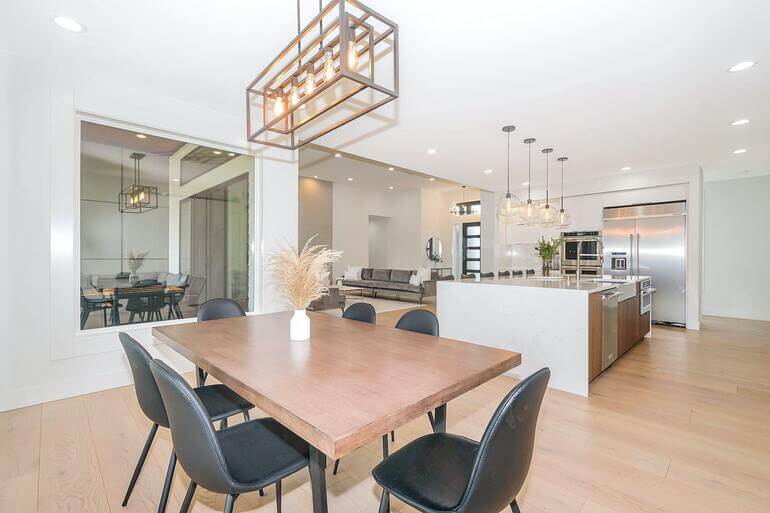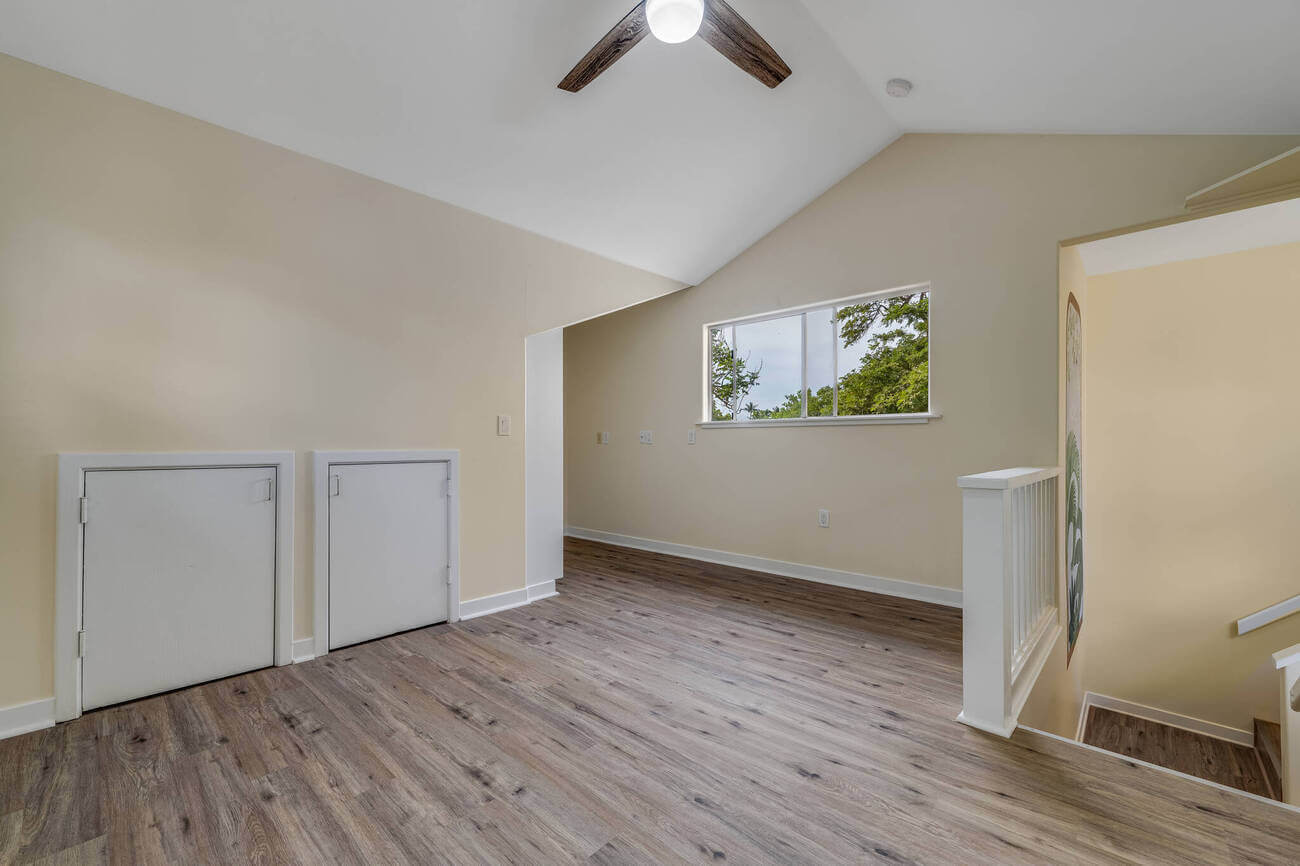Table of Contents
- The Value of Home Staging
- An Overview of Both Home Staging Methods
- Traditional Staging vs 3D Virtual Staging – A Comparison
- Partner With PhotoUp for Outstanding 3D Virtual Staging
Staging is a valuable marketing tool for making a property look its best when listing it for sale.
There are two home staging methods – regular (traditional) staging and 3D virtual staging.
How do you decide which method will be best for your listing?
Therefore, in this article, we’ll compare traditional home staging vs 3D virtual staging to understand the advantages and drawbacks of each better.
But first, let’s see why staging is so important in real estate sales!
The Value of Home Staging


Staging a home means preparing it to go on the market for sale by enhancing the furnishings and decor — and sometimes, redecorating and renovating rooms to make the property as attractive as possible.
Staging a home is beneficial because it can make it appear more attractive to potential homebuyers. For example, staging can involve the following tasks:
- Decluttering rooms and removing unwanted objects
- Rearranging furniture
- Adding a fresh coat of paint
- Making updates and needed repairs
These and other improvements to the home’s appearance can go a long way in getting more showings and offers on a home.
For more details on home staging, read this article on the top 6 home staging tips for selling your home.
Additionally, there are several significant benefits to staging, including:
- Improved visual and curb appeal. Professionally staged homes tend to look their best, encouraging more buyers to consider your property
- Removing personal items to help buyers envision themselves living in the home
- Staging helps buyers see the property’s potential. It can be hard to imagine a beautiful and stunning home looking at empty or cluttered rooms
- Increase the selling price. Staging helps sell properties faster and often for higher prices
And staging has been proven effective in real estate sales, as these recent statistics show:
- Staged homes sell 75% faster than those that are not
- 83% of staged properties sell at the asking price or above
Now, let’s look more closely at the two home staging methods – traditional and 3D virtual.
An Overview of Both Home Staging Methods
Real estate sales professionals and home sellers have two staging methods available- let’s examine these methods in more detail.
Traditional Home Staging

Regular or traditional home staging usually involves hiring a home staging professional to help the sellers prepare the house before listing it.
Depending on the condition of the decor and furnishings, they will work with the existing items or will rent new or additional ones.
Here are some examples of what a home stager might do to a listing:
- Rearrange furniture to make a space look larger
- Temporarily rent furnishings for a vacant listing
- Suggest minor decor updates and changes
- Help the seller declutter
- Oversee repair and remodeling projects
- And even make virtual upgrades to the landscaping
As you can see, a home stager adjusts each room’s layout and design elements to make the home more appealing to potential buyers.
Next, let’s look at the other staging method – 3D virtual staging.
3D Virtual Staging


3D Virtual staging uses photo editing technology to enhance a room or space by digitally adding or replacing furniture, decor, and design accessories.
For virtual staging, all you need is a photo of the room or space. Then, give the photo to a professional virtual staging designer who can do the following:
- Add or replace furnishing and decor
- Update cabinetry, doors, and fixtures
- Make flooring and wall color changes
- Do repairs and remodeling
There are few limits to 3D virtual staging, making it easy to give any room or space the desired look and style.
Want to see what virtual staging looks like? Read this article — What Is Virtual Staging in Real Estate? (Examples Included).
Now that you understand the difference between the staging methods, let’s compare traditional home staging vs 3D virtual staging to determine the best option.
Fast & Affordable
Virtual Staging Service
Interiors. Landscapes. Commercial. Virtually transform any space.
Traditional Staging vs 3D Virtual Staging – A Comparison
The fundamental difference between traditional and virtual staging is that traditional staging showcases a property as it is, while 3D virtual staging shows a property’s potential.
And there are other noticeable differences between the two methods. Let’s look at some of them more closely.
An Overview of the Differences
Traditional Home Staging

- Depending on the circumstances, traditional home staging costs anywhere from $1,000 to $20,000, and often, even more
- Traditional home staging is labor-intensive. It requires physically moving furniture, storing items, doing repairs, and rearranging the layouts and flows of rooms
- It’s time-consuming and disruptive. The sellers will need to endure workers around the house and rooms upended, and it can take many days or even weeks
- It’s limiting – the seller selects a design style and implements it whether potential buyers like that style or not
3D Virtual Staging
- On average, 3D virtual staging will cost you $10-$100 per image
- The staging is done digitally and isn’t labor-intensive. It’s also not disruptive to the seller
- It’s quick — most 3D virtual staging services take two days or less for turnaround time
- It’s flexible – you can show a room or home in various design styles, piquing the interest of buyers


A Drawback of Traditional Home Staging – It Can Be Expensive
While traditional home staging might help you sell your house faster, it also requires additional costs, among them:
- Fees for the home staging professional, movers, and contractors
- The costs of furniture rental – often needed for a few months
- Paying for actual repairs and remodeling
According to HomeAdvisor, many homeowners paid, on average:
- Anywhere between $650 and $2,300 for professional staging
- Furniture rentals averaged $6,000 or more
- The national average home staging cost is around $1,800
In addition to the financial cost, home staging requires much effort and time, even if you do it yourself.
All these efforts require money you hope to make back from a higher-priced sale, but there’s no guarantee.
The Benefits of 3D Virtual Staging


3D virtual staging takes the power of home staging online and offers many benefits that traditional home staging lack.
For example, consider these advantages of 3D virtual staging:
- Capture Buyer Interest – over 90% of buyers start looking online — virtual staging makes every photo impressive and highly appealing
- Sell Homes Faster – homes that are staged sell faster than those that are not – and virtual staging takes less time than traditional methods (24-48 hours instead of days)
- Higher Sales Prices – staged properties sell for the asking price or above
- It’s Less Expensive – in fact, virtually staging a room is about 97% cheaper than actual staging
Another significant benefit is that 3D virtual staging is highly flexible. You can showcase the home according to the latest design trends.
For example, PhotoUp’s 10 interior design styles include the following:
- Mid-Century Modern
- Scandinavian
- Coastal
- Farmhouse
- Modern
- American
- Industrial
- Hamptons
- Luxury
- And Southwestern
So, as you can see, 3D Virtual staging helps you showcase a home online with stunning visuals that get attention.


Which Staging Method Is Better?
Both methods have their advantages, which you choose will depend on the circumstances.
However, here’s the bottom line. Traditional home staging can help sell a home at a higher price. But it requires effort, time, and quite a bit of money.
3D Virtual staging is faster and less expensive. Plus, it allows for more decorating options and a variety of design styles.
With 3D virtual staging, you demonstrate a property’s potential and its endless design and use possibilities.
Therefore, when the buyers see the home in person, they can focus on the details and condition of the property itself, already knowing the decorating options.
Still can’t decide? Let PhotoUp help.
Fast & Affordable
Virtual Staging Service
Interiors. Landscapes. Commercial. Virtually transform any space.
Partner With PhotoUp for Outstanding 3D Virtual Staging


PhotoUp’s 3D virtual staging service is easy to use, affordable, and outstanding. Their team can help with all your real estate virtual staging needs.
Their 3D virtual staging services include the following:
- Photo-realistic staging of empty or outdated rooms
- Remodeling and repairs
- Object removal, decluttering, and depersonalizing of rooms
- Virtual landscaping, including decks and patio furniture
- Sky replacements and twilight effects
- Grass greening
- And more!
The company offers an extensive furniture library with 10 design styles and 100s of accessories, excellent service, and a quick turnaround of 24 to 48 hours.
And their virtual staging services are extremely simple to use. You’ll get amazing, alluring staged photos for your listing in 3 easy steps:
1) Sign up for a free PhotoUp account and upload your photos
2) Select from our library of design styles and furnishings
3) We send you proofs for approval and download in 24 to 48 hours
PhotoUp Virtual Staging Demo
Check out this short virtual staging demo to learn more about the quick and easy ordering and uploading process.
And PhotoUp does much more than just virtual staging. Their services also include:
- Real estate photo editing
- Single property websites
- Real estate photographer websites
- Property flyers
- Floor plans
- Video editing
- Virtual Assistants
- House portraits
- And more!
So, take the next step, improve your marketing, and grow your business.
Sign up for a free PhotoUp account and let us help you impress your clients and sell your listings faster and for higher prices.
We hope you enjoyed this post – Is 3D virtual staging better than regular staging? Also, before you go, you may want to check out the following related resources:






